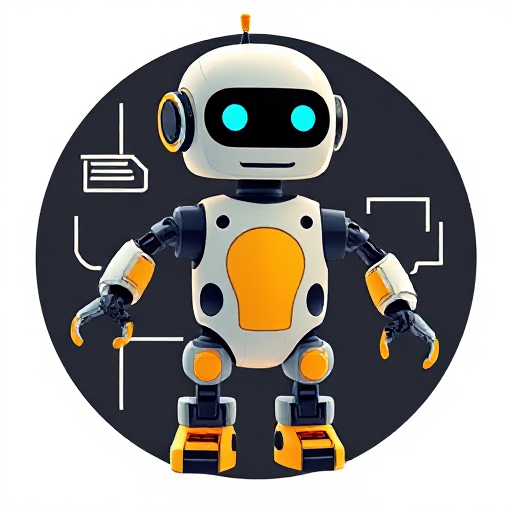
Robotics programming is the backbone of modern robotics, enabling machines to interact with the world around them, perform tasks autonomously, and adapt to dynamic environments. Whether you’re aiming to build a robot from scratch, create an automated system, or pursue a career in robotics, mastering robotics programming is a key step. In this article, we will guide you through the process of learning robotics programming in an informative and educative manner.
1. Understanding the Basics of Robotics
Before diving into programming, it’s important to understand what robotics is and how it works. Robotics is the field of engineering that deals with the design, construction, operation, and use of robots. Robots are machines that can carry out a series of tasks autonomously or semi-autonomously, often with the help of sensors, actuators, and programming.
Key Components of a Robot:
- Sensors: Devices that allow the robot to perceive its environment (e.g., cameras, ultrasonic sensors, infrared sensors).
- Actuators: These are the parts of a robot that perform actions (e.g., motors, servos, wheels).
- Controller: The brain of the robot, usually a microcontroller or a computer, that processes the input from sensors and sends commands to actuators.
- Software/Programming: The code that tells the robot what to do and how to respond to different inputs.
2. Fundamentals of Programming Languages for Robotics
To program robots, you need to be proficient in programming languages that are widely used in robotics development. The two most common types of programming languages in robotics are:
a) High-Level Programming Languages
These languages are easier to learn and are used to create complex behaviors in robots.
- Python: Python is a versatile, beginner-friendly language and is widely used in robotics. It’s great for writing scripts to control robots, work with sensors, and process data.
- Libraries: Some popular Python libraries for robotics include:
- PyRobot: A simple, high-level interface for controlling robots.
- ROSPy: A Python library that interfaces with the Robot Operating System (ROS), a flexible framework for robot software development.
- Libraries: Some popular Python libraries for robotics include:
- C++: C++ is the most widely used language in robotics because it provides a good balance between high performance and control. It’s ideal for low-level programming, such as controlling motors or optimizing robot performance.
- Java: Java is another object-oriented programming language used in robotics. It’s known for portability and is commonly used in Android-based robotics projects.
b) Low-Level Programming
Low-level programming is typically required for hardware interfaces and sensor integration.
- C: C is often used for embedded systems and low-level programming. It allows direct control over hardware and memory, which is crucial for embedded systems like microcontrollers.
- Assembly Language: Although not widely used today, assembly language can sometimes be necessary for extremely low-level programming tasks.
3. Getting Started with Robotics Programming
Once you understand the basics, the next step is to start practicing and gaining hands-on experience. Here’s a step-by-step guide on how to begin:
Step 1: Set Clear Learning Goals
Start by determining why you want to learn robotics programming. Are you interested in building a robot, automating tasks, or pursuing a career in robotics engineering? Having clear goals will help you focus on the right areas, whether it’s motion control, perception, or artificial intelligence (AI).
Step 2: Learn Basic Programming Concepts
If you’re new to programming, it’s important to grasp the basic concepts before tackling robotics. This includes:
- Variables and data types
- Loops and conditional statements
- Functions and classes
- Object-oriented programming (OOP) concepts
Start with Python, as it is one of the most accessible programming languages for beginners. There are many free online resources, such as Codecademy and freeCodeCamp, to get started with Python.
Step 3: Familiarize Yourself with Electronics and Microcontrollers
Robotics requires you to interface software with hardware. Understanding electronics and microcontrollers is essential, as they are the components that control sensors and actuators. Start with:
- Learning about basic components (resistors, capacitors, transistors, etc.)
- Getting familiar with microcontrollers (Arduino and Raspberry Pi are excellent starting points)
- Understanding circuits and how to connect sensors and actuators to microcontrollers
You can experiment with small projects like blinking LEDs or controlling motors with an Arduino.
Step 4: Learn about Robot Operating System (ROS)
ROS is an open-source framework that provides tools and libraries to simplify robotics programming. It’s widely used in both research and industry. Although ROS can be challenging for beginners, learning it will significantly enhance your programming skills.
Start with simple ROS tutorials:
- ROS Basics: Learn how to control robots using ROS, understand nodes, topics, and services.
- Simulations: Use tools like Gazebo (a robotics simulation platform) to test your programs without physical hardware.
- ROS Packages: Explore various packages that help with perception, navigation, and control.
Step 5: Work on Projects
Hands-on experience is essential for learning robotics programming. Start with simple projects and gradually increase the complexity. Some beginner robotics projects include:
- Line-following robot: A robot that follows a line using sensors.
- Obstacle avoidance robot: A robot that detects obstacles and changes its path to avoid collisions.
- Voice-controlled robot: Build a robot that responds to voice commands.
Once you’re comfortable with these, challenge yourself with more advanced projects like:
- Humanoid robots: Robots that mimic human movement and interaction.
- Autonomous vehicles: Self-driving cars or drones using computer vision and AI for navigation.
4. Explore Advanced Topics in Robotics Programming
As you progress, you may want to delve deeper into more advanced aspects of robotics programming, such as:
- Computer Vision: Teaching robots to “see” and interpret the world using cameras and image processing techniques (OpenCV is a popular library for computer vision).
- Artificial Intelligence (AI): Implementing AI algorithms for tasks such as decision-making, path planning, and machine learning in robotics.
- Machine Learning: Use algorithms that allow robots to learn from their environment and adapt to new situations.
- Kinematics and Dynamics: Understanding the motion of robots and how to model and control their movements in 3D space.
5. Join Robotics Communities and Forums
Learning robotics programming can sometimes feel challenging, but you’re not alone. Join online communities, attend meetups, and participate in robotics competitions to learn from others and share your projects. Some helpful forums include:
- ROS Discourse: A community-driven platform for ROS users.
- Stack Overflow: A general programming community where you can ask questions and get answers from experts.
- Reddit: Subreddits like r/robotics and r/arduino offer discussions, advice, and project ideas.
6. Keep Practicing and Stay Updated
Robotics is an ever-evolving field, with new technologies, techniques, and tools emerging regularly. Keep yourself updated by reading research papers, blogs, and books on robotics. Some recommended books include:
- “Robot Programming: A Practical Guide to Behavior-Based Robotics” by Joe Jones
- “Introduction to Robotics: Mechanics and Control” by John J. Craig
- “Learning Robotics Using Python” by Lentin Joseph
Stay motivated by working on new projects and challenging yourself with complex tasks, and you’ll continue to grow as a robotics programmer.
Learning robotics programming can seem daunting at first, but with the right approach, tools, and mindset, it becomes an exciting and rewarding field. Start by building your foundational knowledge of programming, electronics, and robotics concepts, and then move on to more advanced topics and hands-on projects. Robotics is a multidisciplinary field, so don’t be afraid to explore different areas and continue learning. With persistence and dedication, you’ll be well on your way to becoming a skilled robotics programmer.






